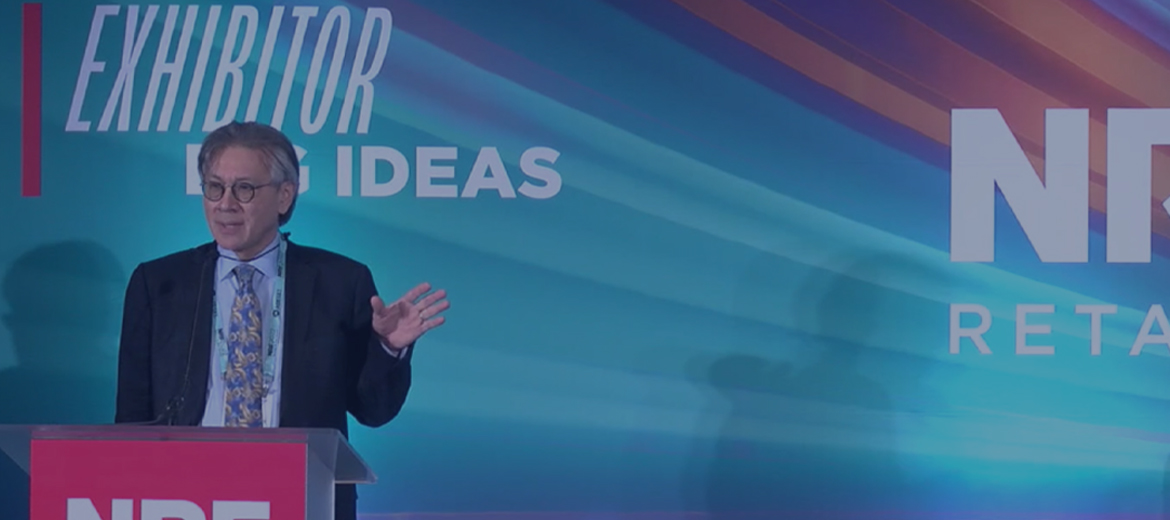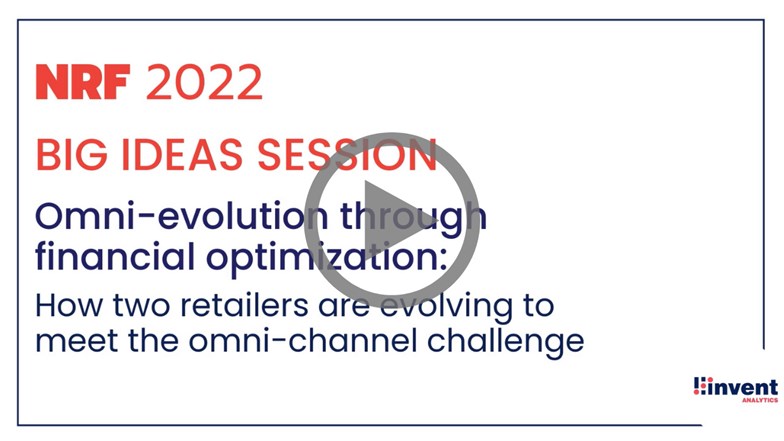
NRF 2022 Big Ideas Session: Omni-evolution through financial optimization
This year, NRF 2022 brought together more than 15,000 attendees, 750 exhibitors, and 525 speakers from across the globe for the largest in-person retail event since the onset of the pandemic.
During NRF 2022, Invent Analytics hosted a Big Ideas Session which was about omni-channel evolution and financial improvement through AI-based inventory optimization.
The session included Migros Supermarkets and Flo Shoe Retail Chain’s success stories where they’ve talked about their transformational omni-channel journeys with Invent Analytics. They’ve also explained how Invent Analytics' AI-based systems improved their supply chain planning and execution, helped them achieving significant improvements in inventory turnover, availability and fulfillment costs at the same time.
During this insightful session, Jiri Nechleba, Board Member at Invent Analytics talked about replacing disparate KPIs with a unified financial framework and solving the omni-channel supply chain problem.
Excerpts from Jiri Nechleba, Board Member, Invent Analytics NRF 2022 Big Ideas Session Speech
Retail has always evolved, what makes omni-channel change different?
Retail has always been changing. But what makes the omni-channel change a little bit different? If you think about traditional retail, there's this whole thing: “Stack it high and let it fly”. And basically, what we do is we put inventory in front of customers, and we got customers in front of inventory, and we tried to sell things. In the past, we had very simple statistics, or KPIs, for how well this worked.
But now let's talk a little bit about what omni-channel is.
Omni-channel is putting inventory into motion. It's basically making it not singular at a point in geography but saying we can flow from anywhere to anywhere. And that replaces these simple assumptions of turns and in stocks with very complex questions.
And today node KPIs are kind of meaningless. If we can flow inventory from point to point, what does it really mean if we are in stock at a point or if we can service that demand elsewhere? With the inventory in motion, what matters is how well the entire system supports the customer. And most importantly, what are the costs and profit associated with that? It's a financial set of KPIs, and now this matters more than anything else because heuristic KPIs don't really link us very closely to how we make and lose money.
Omni-channel retail: What tools do we have to measure, manage, and change?
Today, we think a lot of retailers have omni-channel mandates. A lot of companies are saying “We need to figure out how to use our inventory, put it in motion, and get it to the customer wherever they are, wherever they want it.”
This leads to a planning conundrum, which is about how we plan for this kind of world. What conventional tools do we have to measure, manage and change that are often stretched? We see a lot of companies scratching their head trying to figure it out. For example, suppose we use conventional metrics of service levels at every node in our supply chains and make all our stores or many of our stores ship points or hubs, store hubs. In that case, if we set those inventories based on the demand patterns, we just need way too much inventory.

Positioning inventory to maximize retailers’ ability to fulfill customer demand most profitably
What retailers need is a different kind of planning framework. And that’s what Invent Analytics has been working on. Invent Analytics has always optimized inventory in the planning phase around profitability. As a result, their solutions generate a lot of profit impact. But that's one layer of the whole supply-side or supply chain. That's the planning layer.
Omni-AI for Omni-Retail: Extending optimization to the entire supply side
And if we think more in a more overarching way, what Invent Analytics brings to the table is Omni-AI for Omni-Retail, which answers the question of: “How do we design our network to support omni channel? What network structures work best?”
We can try many different structures, but in traditional retail, we typically do trial and error. We try something, measure it, see if we like it or don't, and then evolve it. The problem is with hundreds of nodes, the combinations are just too many to do through trial and error.
And, frankly, most retailers are challenged to make these changes much faster than through a series of trials and errors. Planning in the center is kind of the traditional place that retailers optimize their inventories. Invent Analytics profit optimizes the inventory planning and answers the question of “Where do I bet my inventory function?”
And the final part is execution. Customers now say send this item to me, where do we send it from? How do we fulfill that execution? How do we profit-optimize the fulfillment of the customer domain? As a retailer, if you can integrate those into one framework that's all financial, then you can coordinate all of those elements to work together effectively to solve and deliver inventory to customers profitably.

Watch the full NRF 2022 Big Ideas Session here:
If you’re interested in profit-optimizing your supply chain and achieving significant financial improvement with an integrated supply chain planning system, contact our retail experts to schedule a demo and see Omni-AI in action.




